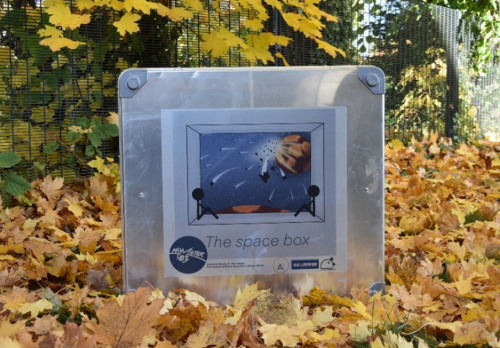Dust from space enters Earth’s atmosphere
Every day, about 100 tons of rubble or dust from space enters the Earth’s atmosphere. Most meteors are too small to be seen from the ground as shooting stars, yet they can be traced through radio techniques – even in cloudy skies and during the day!
Mobile, easy-to-use kit for observations
In MOMSTER, teachers can borrow a mobile, easy-to-use kit for radio meteor observations (consisting of a small antenna, a receiver box and a laptop), accompanied with educational material that they can download on the MOMSTER educational website (in Dutch and French) (and which is continuously expanded). This gives students hands-on experience with scientific concepts that they learn in science classes.
The project goals are stimulating STEAM (ultimately resulting in nudging future career choices towards science or engineering career paths) and the use of citizen science (especially the Radio Meteor Zoo initiative) at schools, and reaching the general public.
What makes MOMSTER innovative?
As a subject that triggers the imagination, the study of meteors clearly has the potential to raise interest in STEAM disciplines and increase science engagement by linking with art and citizen science.
Indeed, using STEAM education broadens our target group towards less scientifically oriented students. As such, we hope to inspire many more pupils and their teachers and convey a fascination for the ephemeral beauty and complexity of these natural light-shows.
MOMSTER was supported by the 2020 round of the Europlanet Public Engagement Funding Scheme.
Read more
MOMSTER project on the BRAMS (Belgian RAdio Meteor Stations) website

